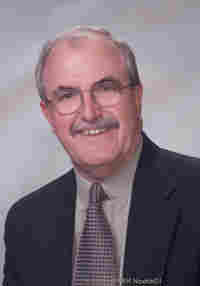How Many People Have to Be Killed ...
I don't know how many times I'd been asked this question since I've been on the city council and I know our traffic engineer probably gets this question daily.
There is, of course, no good answer to this. We certainly don't want to wait for anything as serious as a death before we take action but, on the other hand, we don't want to cause an accident of death by our actions either.
This is why we, the city and county, hire qualified professionals to carry the title of "Traffic Engineer". They are professionals with experience and specialized training just as are the other public works civil engineers who make daily decisions about the construction of our streets, sewers, water system, bridges and all the other important infrastructure needs of a city. Ditto for all of our city departments.
Stop signs and traffic signals are the most difficult areas to address to those who feel the need for them because the whole science is counter-intuitive. As solutions go, they are regarded as the lesser of two evils when it comes to traffic management. This is why the state, county, and city must meet a rigid set of engineering criteria called "warrants" before they are installed.
These "warrants" are measurements of traffic volumes for prescribed periods of time, the number and severity of accidents, pedestrian volume, and the effect on the "traffic system". This criteria is based on studies and analysis by the Federal Highway Administration and are contained in the Manual of Uniform Traffic Control Devices (MUTCD). Go to http://mutcd.fhwa.dot.gov/resources/state_info/minnesota/mn.htm for more information.
The dichotomy is that often times installing a traffic signal to provide easier access to a busy thoroughfare and prevent accidents may cause an increase in accidents of another kind. There are many studies that show an increase in rear-end collisions and t-boning after a signal is installed that did not occur prior to its installation.
So, it's not about good or bad planning, the budget, the whim of anyone, stubbornness or not recognizing your concerns, but really is following the best known practices to insure your and my long range safety.
Just thought you'd like to know.
Labels: MUTCD, stop signs, traffic engineering, traffic signals


<< Home